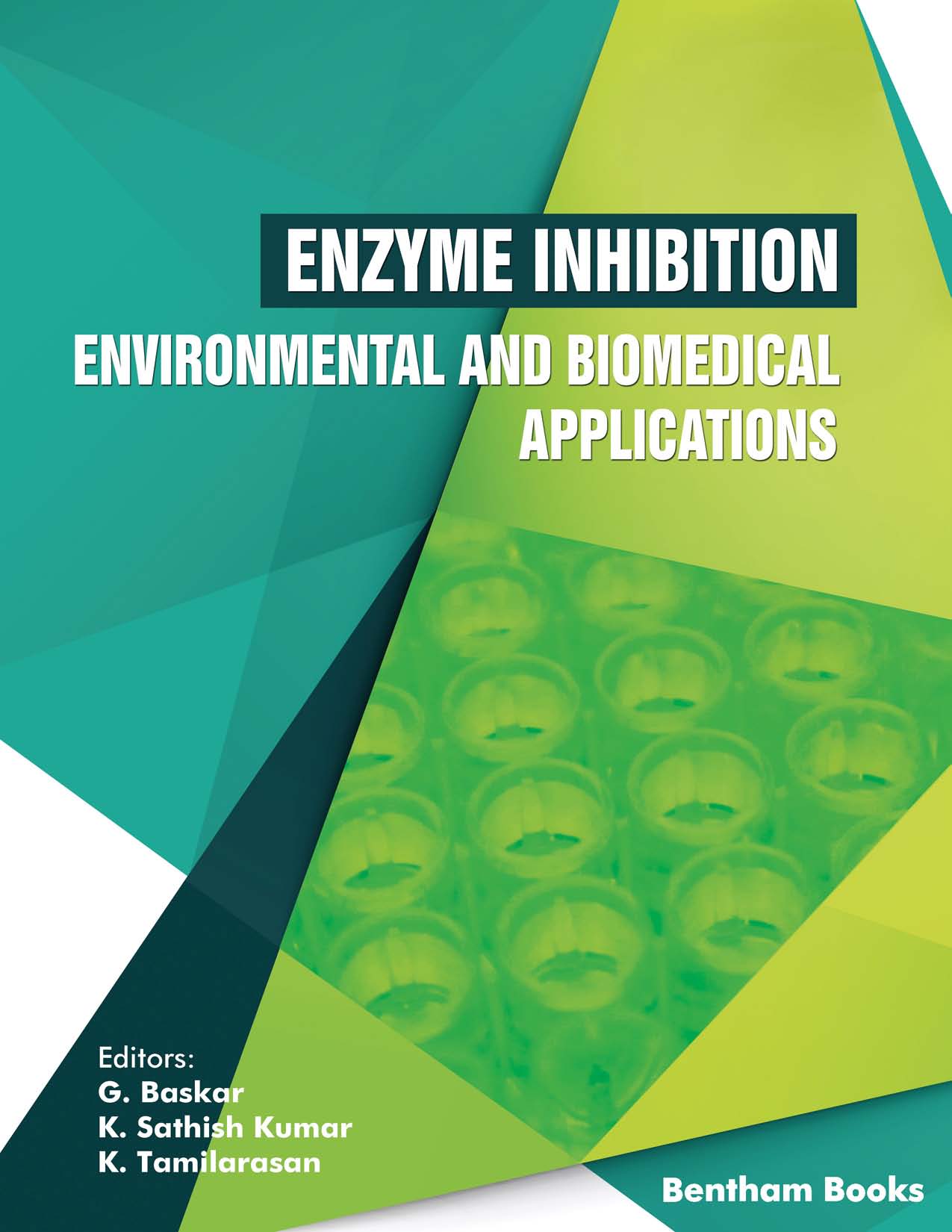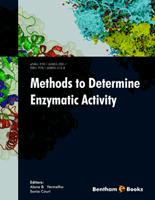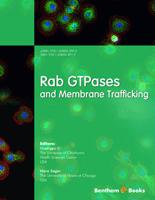Enzyme, a protein molecule exhibits specific activity and binding towards the substrate molecule for the completion of biocatalytic reaction. Enzyme inhibitors are molecules which prevent the functioning and interaction of enzyme by specific substrate or analogue. The enzyme inhibitors alter and slow down the catalytic action of enzyme in various modes. The activity is mainly inhibited by reversible, irreversible inhibition, covalent, non-covalent binding. The inhibitors also act on specific and non-specific site including bacteria, virus, plants and animals. The inhibitors play a vital role in pharmaceutical and other bio-chemical industries. The enzyme inhibitors are widely used as herbicide and pesticide for the destruction of pathogens. The action of inhibitors has paved the way for the development in drug discovery and pharmaceutical industries. The enzyme inhibitors act as drug molecules (Eg.antimicrobial drug) in the treatment of various disease. This drug deactivates the enzyme needed for the survival of pathogens. Enzyme inhibitors also find its application in the metabolic process by inhibiting the action of enzyme against animal predators. The new insight of enzyme inhibitors in environmental monitoring has gained wide attention among researchers for the development of biosensor. The main objective of this book on “Frontiers in Enzyme Inhibition – Environmental and Biomedical Application” is to provide necessary information on recent development in the field of enzymology. This book also explains the applied inhibition method in drug discovery. This book mainly focuses on enzyme inhibition and its application in pharmaceutical and environment.
The book will be highly valuable for students and researchers for enhancing their knowledge on basic concept of applied inhibition in the field drug discovery related projects. This book is compiled based on the basic concept of specific inhibitors in environmental and pharmaceutical applications. The main theme of this book includes
1] Enzyme inhibition in the development and assessment of biosensors
2) Product inhibition during fermentation process
3) Inhibition in crop management
4) Inhibition in the development and formulation of drug
This book will give wide knowledge and understanding of the development of drug and biosensors. This book gives collective information on various mechanisms and alterations that are noted during the developmental stage. This book consists of 13 chapters and the summary of each chapter is given below.
Chapter 1 gives a general background and significance of enzyme inhibition. The basic mechanism and scope of inhibitions are listed out in this chapter. This chapter outlines the outstanding application of Serine protease inhibitors in anticancer treatment and regulating blood coagulation factor. The importance of other remedial inhibitors is also summarized in this chapter.
Chapter 2 gives information about the enzyme based biosensors and their typical component. The importance of coupling electrochemical sensors with metabolites and antibodies is summarized. This chapter gives an idea about the intendment parameters influencing the design of biosensors. The role of biosensor in clinical and management of pesticides is explained in a detailed fashion. This chapter also highlights the strategies of enzyme inhibition in bio-sensing frameworks. The purport of biosensors in light of catalyst and its resistance is explained in this chapter.
Chapter 3 discusses the role of enzyme inhibition in the design and assessment of biosensors. The recent advances and challenges faced during the fabrication of biosensors are explained in this chapter. This chapter clarifies the different applications of inhibition based biosensor focusing on clinical and environmental management.
Chapter 4 provides applications RNA Silencing in Enzyme Inhibition and its Role in Crop Improvement. Expression of antisense genes and the related gene silencing technique has been exploited as an applied technique in plant biotechnology for creating “metabolic engineered plants” in which the endogenous target gene, which is responsible for the unpleasant character is specifically suppressed. In the present chapter, the down-regulations of the enzyme using the gene-silencing technique used in various crop varieties are discussed in detail.
Chapter 5 provides an overview of the history and development of biosensor based on different generations of biochemical signal including antigen –antibody interactions, nucleic acid and microbial cell. The role of enzyme inhibition and the development of enzyme based biosensors is explained in this chapter. The importance of enzyme inhibition in the detection of pesticides and heavy metal is discussed in this chapter.
Chapter 6 deals with interesting insights into therapeutic accomplishments of matrix metalloproteinase inhibitors in arthritis, autoimmune disease, inflammations, cancer and cardiovascular disease. The functional role and inhibitors of metalloproteinase are explained in this chapter. This chapter also deals with the clinical implication of matrix metalloproteinase and its effect.
Chapter 7 reviews the potential biosensors based on enzyme inhibition and its application in various fields. The kinetic parameter in the design of biosensor is explained in this chapter. The detection level of toxins, heavy metal and pesticides is detailed in this chapter. This chapter also highlights the significance of enzyme inhibition in assessing the drug and its development during various phases. The assessment of the safety level of food by enzyme based biosensors are explained in this chapter.
Chapter 8 presents detailed information on product inhibition during fermentation of ethanol. The cell growth and ethanol inhibitions and related kinetics are explained in this chapter. This chapter also explains the validation of product inhibition.
Chapter 9 highlights the significant strategies to reduce the inhibition of bioethanol during fermentation process. The production of bioethanol from different strains and sources is explained in this chapter. This chapter summarizes the different pre-treatment conditions and factors affecting the inhibition condition is explained in this chapter.
Chapter 10 explains various Persistent Organic Pollutants (POPs) and their action with respect to the neurotoxic effects emphasising on dose-response and structure-activity relationships (SAR). The potential modes of actions and alteration in neurotransmitter systems and the mechanisms are discussed in detail in this chapter.
Chapter 11 gives a general introduction about the anatomy of breast carcinogenesis and the enzyme produced predominately produces in the breast. The mechanism of different enzymes and the inhibitors used as drug in the treatment of breast cancer are given in this chapter.
Chapter 12 reviews various enzyme inhibitor molecule involved in the formulation and development of antiviral drugs for HIV Chikungunya, Dengue, Ebola, Influenza, and Nipah viral diseases. The mode of action, inhibition entry and replication of host cells are discussed in this chapter. This chapter also explains the emerging technologies like CRISPR used for the diagnosis, treatment and alleviation of viral disease progression.
Chapter 13 explains various neurological disorders and the enzyme inhibitors used as drugs is explained in this chapter. This chapter summarizes the action and mechanism of various enzyme inhibition in the therapy of neurological disease.
The editors would like to express sincere thanks to all authors for their phenomenal contributions to this book. The editors also thank all reviewers and well-wishers for the completion of this book.
Dr. Baskar G
Department of Biotechnology,
St. Joseph’s College of Engineering,
Chennai, India.
Dr. Sathish Kumar K
Department of Chemical Engineering,
SSN College of Engineering,
Chennai – 603110, India.
K. Tamilarasan
Department of Chemical Engineering,
SRM University,
Chennai – 603203, India.





